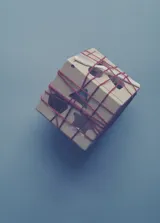Hvorfor skal vi behandle primære tænder?
Caries i det primære tandsæt er et folkesundhedsproblem og en udfordring for tandplejen. En traditionel opfattelse er, at primære tænder med cariesangreb bør behandles med fjernelse af inficeret tandvæv og erstatning med et passende tandfyldningsmateriale. Der er dog sat spørgsmålstegn ved denne praksis. Nærværende artikel undersøger konsekvenserne af ubehandlet caries i mælketænder og fordelene ved at behandle caries i mælketænder. Behandling af caries i det primære tandsæt har positive effekter både på kort og langt sigt for det enkelte barn. Den hastige cariesprogression i primære tænder taler for en mere fyldningsorienteret strategi end ved permanente tænder, hvor progressionen er betydeligt langsommere. Dybe fyldninger i primære tænder øger risikoen for pulpaskader. Der mangler konklusive forskningsdata om, hvordan caries i det primære tandsæt skal behandles, men der er dog rimeligt videnskabeligt belæg for, at gradvis ekskavering og partiel ekskavering giver færre pulpalæsioner.
Why should primary teeth be restored? Caries in the primary dentition is a public health concern and a challenge for the dental care system. An assumption has traditionally been that primary teeth with carious lesions should be restored by removing infected tissue and replacing it with an appropriate dental material. This practice, however, has been questioned. This paper reviews consequences of untreated caries and the benefits of restoring primary teeth. Treatment of caries in primary teeth has positive implications for the child, both in the short and long term. The rapid caries progression in primary teeth suggests a more operative approach compared to permanent teeth since in this case caries progresses more slowly. Deep restorations in primary teeth increase the risk of pulpal involvement. There is no conclusive scientific support for treatment of caries in the primary dentition,but there is some support that stepwise or partial caries removal reduces the incidence of pulp exposure in symptomless, vital, carious primary teeth.


